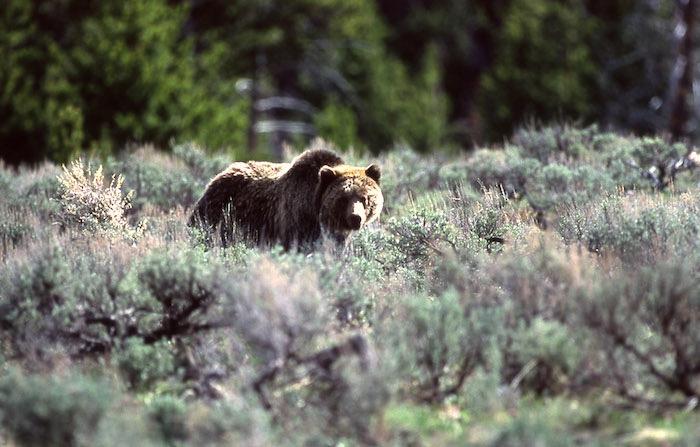
Wyoming officials are moving forward with a plan to open a hunting season on grizzlies outside Yellowstone and Grand Teton national parks, while conservation groups are waiting for a federal court to rule on their contention that the bears shouldn't have been removed from the Endangered Species List/NPS, Jim Peaco
A battle is ramping up over grizzly bears in the Greater Yellowstone Ecosystem, with Wyoming officials planning a hunting season on the bruins while conservation and environmental groups are challenging the removal of the bears from protections of the Endangered Species Act.
Wyoming Game and Fish Department officials currently are taking public comment on their proposed grizzly hunting season. The comment period runs through April, and on May 23 the Wyoming Game and Fish Commission is expected to vote on whether to authorize the hunt.
At the same time, the National Parks Conservation Association is suing in federal court challenging that the delisting is illegal. Therefore, individual state plans to begin hunting should not be made until the federal case is heard, they contend.
NPCA and others filed a lawsuit to challenge the Yellowstone grizzly delisting in August 2017 on the basis that the decision involving a 19,279-square-mile area around the park violates the Endangered Species Act. The coalition’s legal challenge takes issue with the Fish and Wildlife Service’s evaluation of the mortality consequences of the bears’ recent shift to a more heavily meat-based diet following the loss of other foods. It also faults the agency for "surgically delisting" the isolated Yellowstone grizzly population instead of focusing on a broader, more durable grizzly recovery in the West.
Since 1975, Yellowstone-area grizzly bears have been listed as threatened under the Endangered Species Act. Federal biologists in the past acknowledged that population growth of the Yellowstone grizzly bear has flattened over the past decade, and their own data indicates a decline from 2014 to 2016, according to the conservationists. Prior to and during that same period, the grizzly population has faced the loss of two of its most important food sources in the Yellowstone region—whitebark pine seeds and cutthroat trout—due to changing environmental conditions driven in part by a warming climate.
The Fish and Wildlife Service previously attempted to delist the Yellowstone grizzly population in 2007, but that decision was overturned by a federal district court in Montana along with the 9th Circuit Court of Appeals on the basis that the Service ignored the impacts of the whitebark pine loss on the grizzly population. In rejecting the Service’s 2007 grizzly delisting decision, the 9th Circuit admonished the agency that “the Service cannot take a full-speed ahead, damn-the-torpedoes approach to delisting—especially given the ESA’s ‘policy of institutionalized caution.’”
Many grizzly bears that make their homes in Yellowstone and Grand Teton national parks travel inside and outside of park borders. If Wyoming moves forward with hunting along the borders of these parks, these bears could be targeted and killed, damaging the ecological core of the Greater Yellowstone Ecosystem, NPCA maintains.
“National Parks Conservation Association strongly opposes the hunting proposal by Wyoming Game and Fish Department as it threatens Yellowstone and Grand Teton National Park grizzly bears," said Stephanie Adams, NPCA's Yellowstone program manager, in the wake of Wyoming's hunting proposal. "During the federal grizzly bear delisting process last year, Montana, Wyoming and Idaho argued that they intended to manage for a stable population, however Wyoming’s proposal, to harvest two dozen bears, clearly indicates that is not the intent.
"Wyoming’s proposal claims to protect grizzlies that move beyond Yellowstone and Grand Teton boundaries by regulating that bears cannot be shot within a quarter mile of many of the main highways used by park visitors. This offers no real protection for national park grizzly bears," she said. "It merely means the state does not want bears shot in front of the millions of visitors that travel to the region to see wildlife in Yellowstone and Grand Teton national parks each year.”





